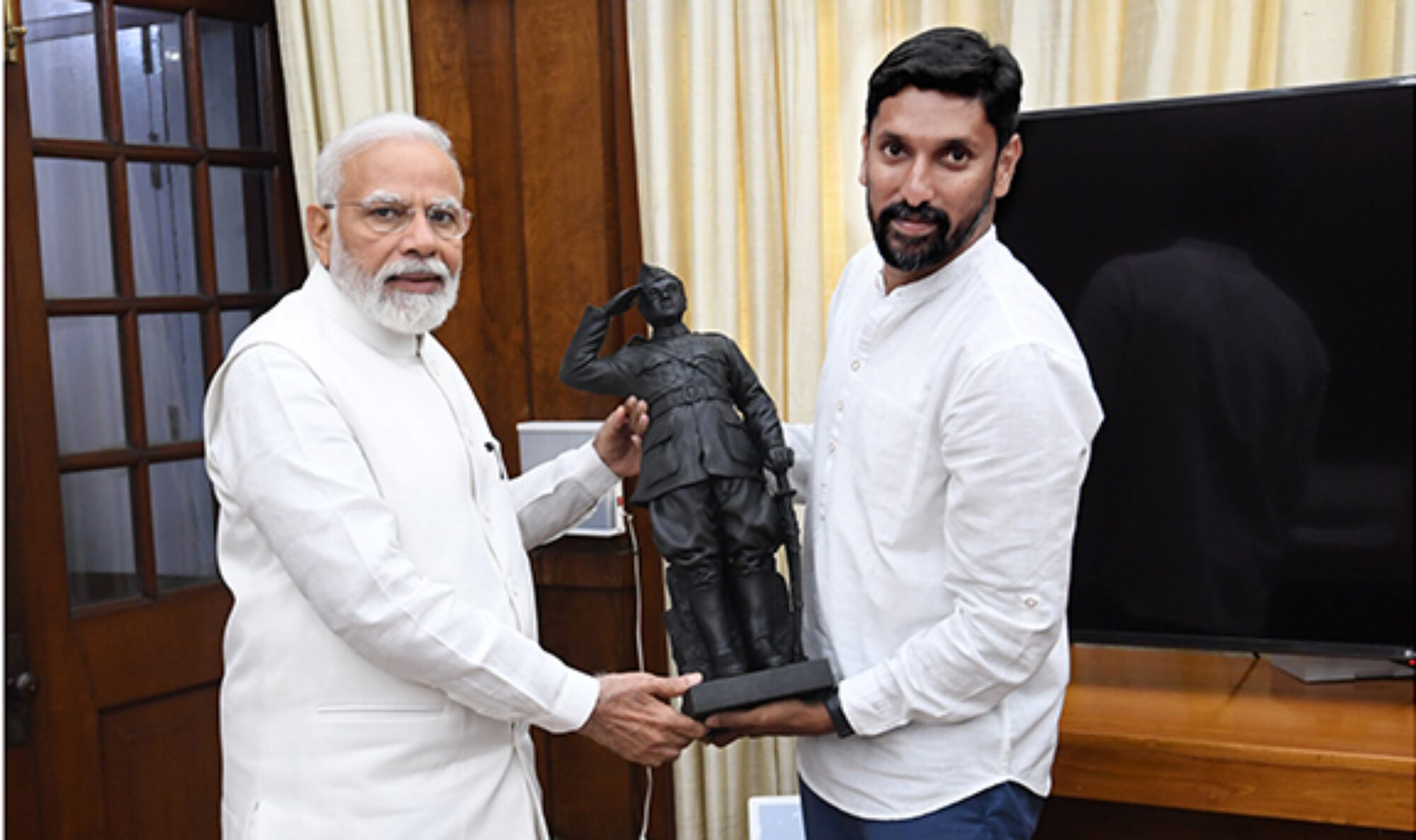Brothers-in-arms – Arun and Suryaprakash are working towards providing knowledge on art of carving sculptures at their workshop in order to keep tradition alive, writes Manish
Where the spirit does not work with the hand, there is no art. – Leonardo Da Vinci, Italian sculptor.
When Arun completed his MBA in HR from a reputed institute, he had decided on his future. The lure of private multinational companies wasn’t meant for him. His goal was different.
He wanted to follow in the footsteps of his ancestors, who have carved several sculptures that can be seen all around the city. Giving him support was his brother Suryaprakash and father Yogiraj Shilpi.
At his workshop, which is located diagonally opposite to Sanskrit Paatashaala, Arun and Suryaprakash have several artisans working on creating various sculptures. Reminiscing about the works carried out by his grandfather – P Basavanna Shilpi – Arun says that the former had carved 64 idols for the Amba Vilas Palace in just 11 months for which the then Maharaja Jayachamaraja Wadiyar had given him a ‘Belli Suthige’ (silver hammer). The Bhuvaneshwari and Rajarajeshwari idols inside the Amba Vilas Palace is also the handiwork of Basavanna Shilpi, he adds.
The statue of Jayachamaraja Wadiyar inside Sri Chamarajendra Zoological Gardens was done by his father. His creation was a seven feet idol of Yoganarasimhaswamy consecrated at Saligrama in Mysore district recently. He said the work was completed within 24 days, which is considered to be as Ardhamandala – an auspicious sign.
Arun mentioned that many know the theoretical aspects of sculpting, but don’t know how to implement it practically. With this in mind, Arun is planning to set-up a website in order to provide people information about carvings.
Also free classes would be held if anybody is interested in learning the art. “Many people in Tamil Nadu are making efforts to keep their tradition alive.
But, in Karnataka art forms are slowly disappearing,” he says. Earlier, a few foreigners, who had come to the city to learn Yoga, had also spent nearly
two months with his father in order to learn the traditional methods of sculpting. He mentioned that he is now providing practical classes to students who have enrolled for sculpture related course at Karnataka State Open University. Last year 11 students had participated in the practicals in his workshop, he adds.
“We specialise in Mysore style of sculpting. Many of the people outside Mysore immediately recognise our style. But those in the city rarely recognise it,” he says sadly. “The Mysore style is an improvisation of the methods used in Hoysala architecture,” he adds.
He recollects that one of the sculptures – Darpana Sundari – given by his grandfather to Nehru is an example. The statue of a ‘Darpana Sundari’
doesn’t have a frame to support it.
With Arun and Suryaprakash taking the mantle of passing knowledge and secrets of sculpting to the next generation, Mysore can hopefully retain its
traditional sculptures. Some of the idols sculpted by Arun and Suryaprakash’s family:
Eight Dwarapalakas at the Amba Vilas Palace.
Gnanachakra – in front of the Crawford Hall of University of Mysore.
Shankaracharya statue at Kollur Mookambike Temple.
20 idols based for Kamakameshwari Temple in Japan.
Kaveri idol at Harangi Dam.
Idols at Kannikka Parameshwari Temple at Sajjanrao Circle in Bangalore, Shaneshwara Temple at Rajajinagar in Bangalore and Mathikere Chowdeshwari Temple.
Carving the future of sculptures
https://www.deccanherald.com/content/231571/carving-future-sculptures.html

